#bees habitat
Text
Raising awareness of bees' contributions to environmental and social resilience.
“World Bee Day has contributed significantly to raising awareness of the importance of bees and other pollinators and to promoting international cooperation to protect them,” said Nataša Pirc Musar, President of the Republic of Slovenia.
Her country initiated the establishment of a World Bee Day in 2016 at an FAO regional conference for Europe and co-created more than 300 pollinator projects with partners on all continents, she said.
For its part, the United Nations marked World Bee Day 2023 with an FAO-hosted global ceremony emphasizing the importance of these hard-working pollinators.
Under the theme of pollinator-friendly agricultural production, the event drew attention to the threats endangering these insects and the need to address them.
On Monday, an event at United Nations Headquarters will showcase best practices and innovative projects with a view to raising awareness of bees' contributions to environmental and social resilience.
“Protecting bees and other pollinators is essential to guarantee agricultural production, food security, ecosystems restoration, and plant health,” FAO Director-General Qu Dongyu said.
As beekeeper Ms. Moreno Veliz said, “bees are extremely intelligent insects. They are beautiful animals.”
#pollinator projects#Ensuring bee health#Pollinator-friendly practices#bees habitat#protect bees#Agricultural tool and innovation#pollinator
0 notes
Text

I made it to the post office to pick up my packages, and look what arrived! The first batch of paperbacks of Butterflies, Bees, Birds, and Bats: A Quick Introduction to Pollinators! You can pick up a paperback for $6 plus shipping at https://rebeccalexa.com/pollinators/, and if you want the ebook for free, join my monthly email newsletter at https://rebeccalexa.com/news-updates/
(Reblogs okay and encouraged - thank you! Also thank you for the reminder about the image ID. I'm pretty good at remembering it in my longer posts, but I sometime forget for these little one-offs.)
#pollinators#insects#invertebrates#save the bees#conservation#environment#habitat restoration#native plants#butterflies#bees#birds#bats#wildlife#animals#nature#chapbooks#free ebooks
77 notes
·
View notes
Photo
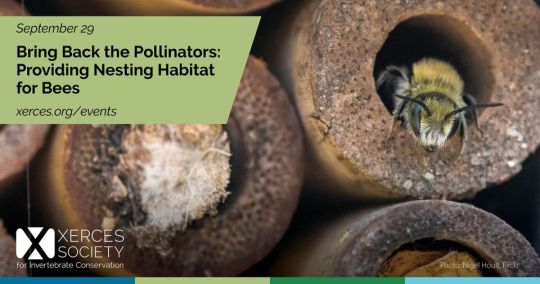
Upcoming webinar:
Bring Back the Pollinators: Providing Nesting Habitat for Bees
September 29: 10:00 AM - 11:00 AM PT / 11:00 AM - 12:00 PM MT / 12:00 PM - 1:00 PM CT / 1:00 PM - 2:00 PM ET
The availability of nesting habitat is a critical yet often overlooked factor impacting native bee populations. In this webinar, Xerces Biologists, Leif Richardson and Sarah Foltz Jordan, will summarize nesting biology of major groups of bees, including leaf-cutter bees, mining bees, bumble bees, and many more.
They will also offer numerous practical approaches to creating and managing nesting habitat features. Approaches are relevant to landscapers, farmers, gardeners, natural resource professionals, and anyone interested in taking the next step in supporting pollinators. Community science opportunities will also be discussed.
Register: https://xerces.org/events/none/bring-back-pollinators-providing-nesting-habitat-for-bees
This is the fourth webinar in the four-part series Bring Back the Pollinators.
This webinar will be recorded and available on our YouTube channel. Closed Captioning will be available during this webinar.
#bees#bee#bee conservation#north american bees#north american native bees#native bees#conservation#habitat#nature#north america#pollinators#savethepollinators#animals#science#ecology#endangered#environment#gardens#gardening#land management
331 notes
·
View notes
Text
i just referred, out loud, to applying for a non-theatre job as "auditioning" and. i think there might be something wrong with me
#bee posts nonsense#i am being taken out of my natural habitat (theatre) and being forcibly introduced to a foreign ecosystem (other jobs)#im going to become an invasive species at this rate#theatre
32 notes
·
View notes
Text
22 September 2023 - Friday Field Notes
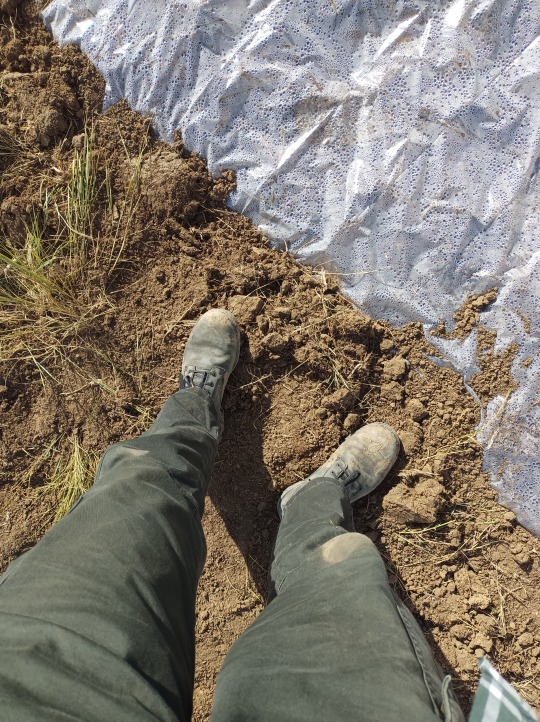
Field work is not glamorous.
It doesn’t matter what field you work in. Often times you’re outside for hours on end, the weather doesn’t cooperate when you need it too, you’re covered in sweat, in dirt, you’re overworked, you’re underpaid, your organization is understaffed, you don’t have the resources or the equipment you need to do the work, and trying to get people to give a shit and effect the change that needs to happen is a perpetual uphill battle that rivals Sisyphus’s eternal punishment. But you adapt, you improvise, and you do the work anyway.
Because it’s important. Because it matters. To me. To you. And to every living thing on this planet. You do it so things can grow and thrive.

Part of my job doing restoration work is removal and management of invasive species, like this Mullein pictured above. Now, Mullein is a plant that originated in Europe and Asia and was brought over to North America for cultivation purposes.
However, it didn't originate in the ecosystems in N. America, didn't evolve along with the local flora and fauna, it has no biological checks in the Great Plains to keep it from overrunning an area like it would in Europe or Asia. Not having any biological checks allows species to create monocultures, which isn't great because it reduces the overall biodiversity of an ecosystem, making it less robust and unable to support the vast array of wildlife you should find in a given area. Some species in the Great Plains do utilize the Mullein as a resource, but again, since it didn't evolve here many species are essentially losing food and habitat because of this plant.
Monocultures also reduce the effectiveness of a habitat's ecosystem services that help support life for all living organisms. Including us. Clean air, clean water, nutrient rich soil to support the growth of food, capturing carbon to sequester to reduce climate change... All reliant on biodiversity. All reliant on populations of native plants.
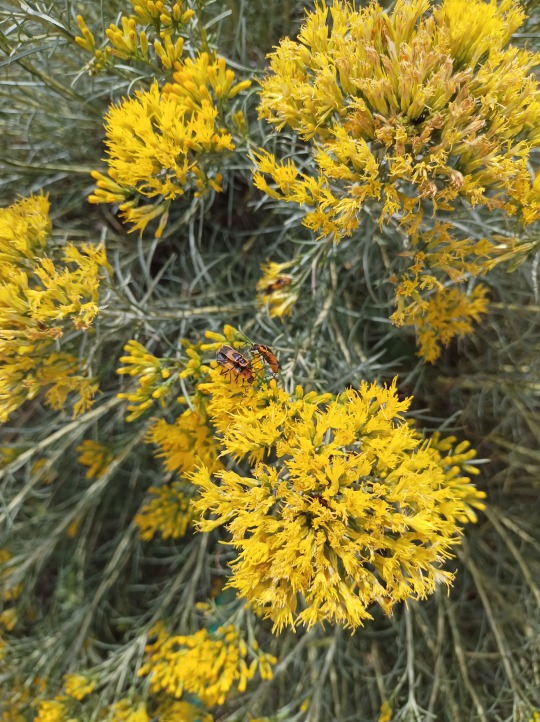

It's not enough to just remove invasive species though. You can't take something out, without putting something back in. Good land management and stewardship practices should also restore ecosystems. Rabbitbrush and Rocky Mountain Bee Plant are both species that are native to my local area, and are a resource for all manner of species.
And that Bee Plant, we planted that last season. It was the only one that grew, but look at all the seed pods on that thing! Hopefully those seeds will go on to make even more Bee Plants and support even more wildlife!
I watched this documentary series last week for work and I'd highly recommend it. It's about the native seed supply chain in the western United States for restoration efforts. A really large area, that needs as much helps as it can get.
https://ser-insr.org/native-seed-film - You can watch it in sections, or they have a couple of different lengths depending on the time you have. But if you only have 12 minutes to give, for sure watch the introduction.
Now, I'd like to point out, these large scale efforts are important, but restoration efforts don't have to be big or elaborate. If you have a spare planting pot or a backyard, you have the ability to restore native habitat. You can bring those ecosystems to you. And it doesn't necessarily require you tearing out your whole yard or sacrificing the plants you do grow.
It may require a bit more homework (you're gonna have to research what plants are native to where you live), and some trial and error, but there are a lot of gorgeous native plants out there that require very little work once they're established compared to "traditional" garden plants.
Humans have carved out huge swathes of land for our own purposes, often to the detriment of other living things and ourselves. We've destroyed entire habitats and ecosystems due to human vanity and simply walked away. Cut our losses. Those habitats and ecosystems are lost. But the land is not gone. And who's to say all those things that are lost can't be found.
It's not easy work, but with some compassion, and a little bit of knowledge, and the willingness to be patient, perhaps we can weave the land back together. Not the way it was, but rather better.
A ghost can dream, right? And perhaps this Pronghorn does too.

It's hard to appreciate the subtle beauty of the prairie. It's not a forest. Not the ocean. Most people might only see grass and not see the richness. The diversity. But I've done a shit-ton of digging this week to try and install a native plant garden.
Field work, manual labor and sweating outside with a shovel, is not glamorous.
But I'm doing this so people can hopefully see the beauty of the prairie, so they can see the beauty in the land around them and perhaps consider planting some native plants of their own. So every living thing out here, big or small, can have a home.

And here's a Megacyllene (sp?), probably a Locust Borer Beetle. It has wasp stripes to dissuade predators from trying to eat it.
#nature#field notes friday#restoration work#short grass prairie#plants#habitat restoration#native plants#locust borer beetle#pronghorn#rocky mountain bee plant#rabbit brush#mullein#land management#land stewardship#native seed restoration#little ghost on the prairie
27 notes
·
View notes
Text
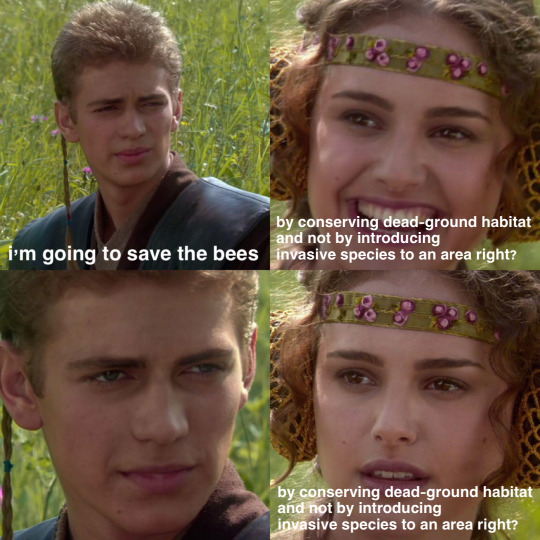
every time someone in north america says they want to save the bees and then they put a honeybee hive in their yard and/or “revamp” their brush pile or bare ground spot by planting flowers i cry. okay i’m done bee posting for now
#the flowers are nice but the limiting factor for native bees tends to be lack of nesting habitat so don’t take that away! replace grass tho#bees#finally posting abt the stuff i actually study
10 notes
·
View notes
Text
unfortunately spiders are a pretty popular part of traditional gnomish cuisine
#gnomes have domesticated giant spiders for silk production#spiders lay dozens or hundreds of eggs depending on the species-- in nature this is to account for things like#sibling cannibalism and just the general extreme mortality rate of small vulnerable invertebrates#but the point is they lay way way more eggs than are ever meant to become adult spiders#so. spider eggs and the first several instars of domestic giant spiders are for eating#gnomes' diet is partly insectivorous in general anyway because of their size and habitat#but spiders are up there with bees as arthropods specifically raised for agriculture as opposed to those collected in the wild#like how silkworms are a popular snack for elves in certain regions 😌#gnome stuff#worldbuilding
12 notes
·
View notes
Text
Can you spot the native bumblebee on my hairy penstemon (penstemon hirsutus)?
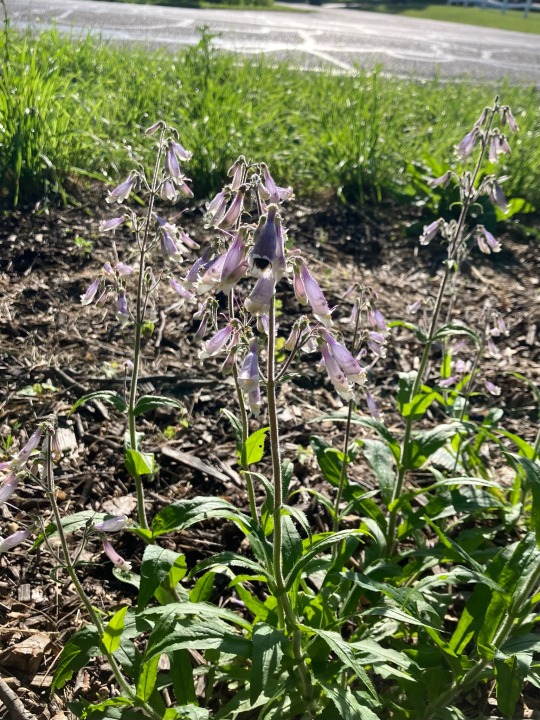
Native plants like penstemons are vital for supporting native pollinators like bumblebees.
#gardening#solarpunk#save the bees#native plants#pollinator garden#the habitat ring#don’t be a petaq grow native plants
4 notes
·
View notes
Text
You know what im genuinely surprised we don't have an episode about? Bees! Not even specifically honeybees! There are over 20,000 species of bees and I have been OBSESSED with them!
Did you know that 75% of wild bee species are ground nesters? That all worker honeybees are female? Or that African honeybees are actually hybrids? that there's a bee called the bumblebee-mimic digger bee that makes little sandcastles as nests? That there's bees that litterally air drop their eggs into the nests of other bees? That the majority of bees have special indents in their legs called "pollen baskets" that they use to carry little balls of pollen around while they fly?
I know they made a cameo in the flight of the polinators, and that the bros almost got vibe checked by them in the honey badger episode, but bees seriously deserve an entire episode dedicated to them specifically! Bees are one of the most interesting insects on the planet!
#wild kratts#bees#wild bees#btw when people say “save the bees” they really mean the many kinds of wild and/or solitary bees that are being threatened by habitat loss#yeah honeybees are fighting mites and all that but the other bees polinate just as if not more plants that they do!#the autism is autisming
14 notes
·
View notes
Text
#be kind to animals#drought#midwest#water is life#certified wildlife habitat#environment#nature#usa native plants#pollinators#native plants#save the bees#homegrown national park#birds#backyard wildlife
20 notes
·
View notes
Text
"Protecting Our Food Supply: The Importance of World Bee Day"
"Happy World Bee Day! Let's protect these vital pollinators and ensure a healthy and sustainable future for our food supply and environment. #WorldBeeDay #Pollinators #Biodiversity"
This past Saturday, May 20, 2023, was the observance of World Bee Day. We should take the time to acknowledge the benefits and the importance of these tiny workers and recognize their vital role to the survival all life on this planet! Everyday is World Bee Day!
Rod W
World Bee Day is celebrated annually on May 20th to raise awareness about the importance of bees and other pollinators for our…
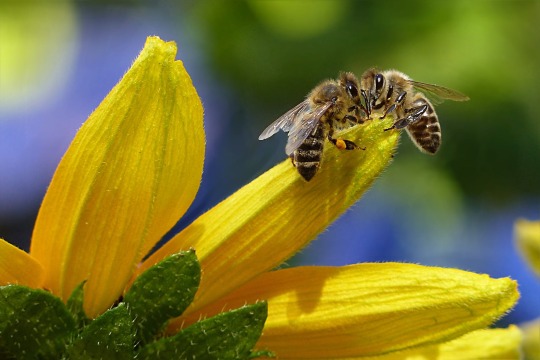
View On WordPress
#Bees#Biodiversity#conservation#ecosystem#food supply#habitat loss#pesticides#pollinators#sustainable farming#World Bee Day
21 notes
·
View notes
Text
Pollinator-friendly practices include crop rotation and diversity, reducing the use of pesticides, and restoring and protecting their habitat.
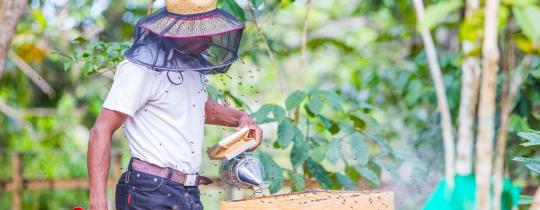
Ensuring bee health is a goal of the United Nations food agency, especially in light of threats against them, including unsustainable agriculture, pesticide abuse, and intensive monoculture production.
Pollination is essential for the maintenance of plant biodiversity, the survival of the world’s ecosystems, with about 75 percent of crops – which produce fruits and other seeds for human consumption – depending, at least in part, on pollinators, including bees, FAO said.
Pollinator-friendly practices include crop rotation and diversity, reducing the use of pesticides, and restoring and protecting their habitat. Even the adoption of precision agriculture tools and innovation can protect bees, the agency said.
To help to better protect the pollinators, the agency hosted and co-organized on Thursday the second International Symposium on Biosecurity in Beekeeping, bringing participants up to date on the latest developments in bee biosecurity and the initiatives that the international organizations involved are applying in different areas of the world to ensure bee health.
#Ensuring bee health#Pollinator-friendly practices#bees habitat#protect bees#Agricultural tool and innovation#pollinators#bees#bee biosecurity#BEEKEEPERS#Bee biosecurity
0 notes
Text
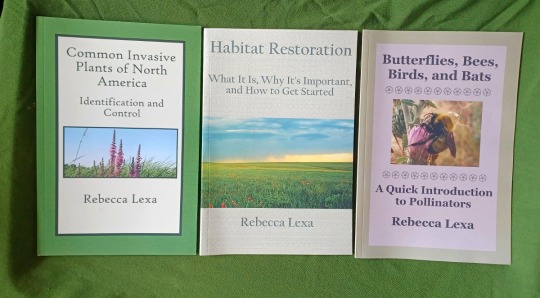
Apparently I've had habitat restoration on my mind when writing chapbooks. You can find Common Invasive Plants of North America: Identification and Control, Habitat Restoration: What It Is, Why it's Important, and How to Get Started, and Butterflies, Bees, Birds and Bats: An Introduction to Pollinators all at http://www.rebeccalexa.com/books, $6 for paperbacks and $3 for ebooks.
#habitat restoration#invasive species#invasive plants#native plants#native species#pollinators#bees#save the bees#butterflies#birds#bats#nature#environment#conservation#wildlife#chapbooks#self publishing
38 notes
·
View notes
Text
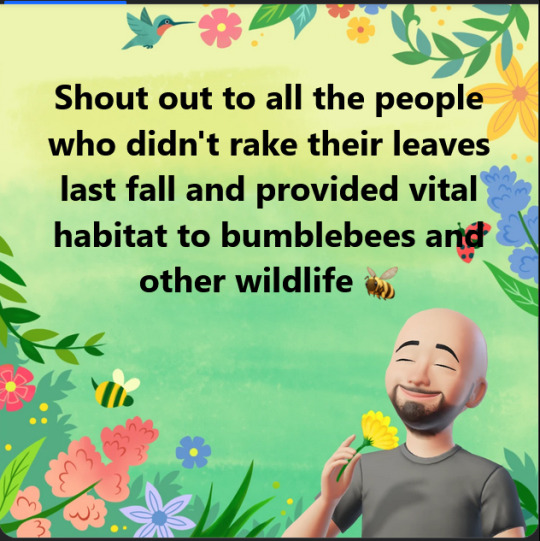
#ecology#eco#wildlife#polinators#nature#natural habitat#no mow#no raking#fuck lawns#no lawns#bees#end hoas#end code enforcement#return to nature
4 notes
·
View notes
Text
im a critical analysis of a text lover in a shippers world and every day it makes me the joker
#i see less and less posts discussing the work and more and more bland or ooc ships feels like im losing habitat to land development#dont take this too seriously im just being petty and annoying BUT.#PLEASE take apart a work you love to see what makes it work and then talk to me#i am foaming at the mouth with thoughts#bee talk
2 notes
·
View notes
Text
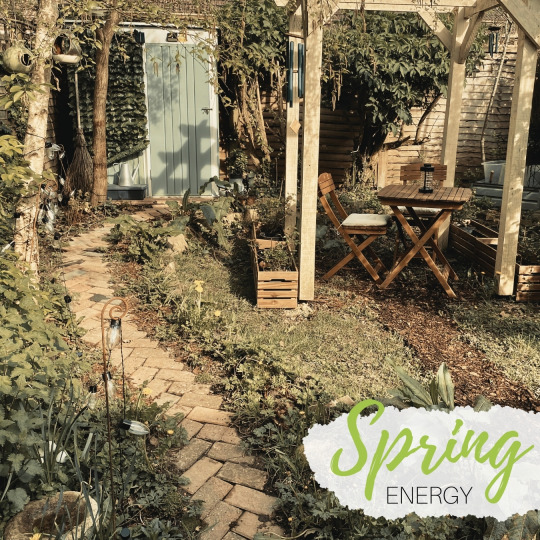

I recently had some landscaping work done, mostly to make it more accessible and what a transformation it’s been. I now get to sit out in it which frees up the patio area (not in view here). Aside from a new shed most of this is reclaimed including the pergola and the little pathway which is done to be semi-permanent so no concrete with the bricks themselves being reclaimed. Aside from my personal enjoyment of this area there is lots that has been incorporated for wildlife.
Not in view is a hogitat, a little water basin (just in shot below left) shallow enough to be safe for our hoggy friends. Lots of stones in the corners for natural habitats. Bird feeders and since taking this shot I got a suet feeder cage that I’m using for nesting material. I also have two water stations for birds as this seems to be something people forget with wild birds.
I’ve also seeded some wild flowers and in the right corner is a small raised bed for cut flowers. Beneficial for bees and me!
One of my future goals is to grow night flowering plants for the night pollinators. Again, everyone seems to forget that bees are not the only pollinators.
#vegan#organic#plant based#healthy#ehlers danlos syndrome#garden#wild birds#wildlife#hedgehogs#hogitat#govegan#crueltyfree#ecosystem#bee#bugs#habitat
2 notes
·
View notes